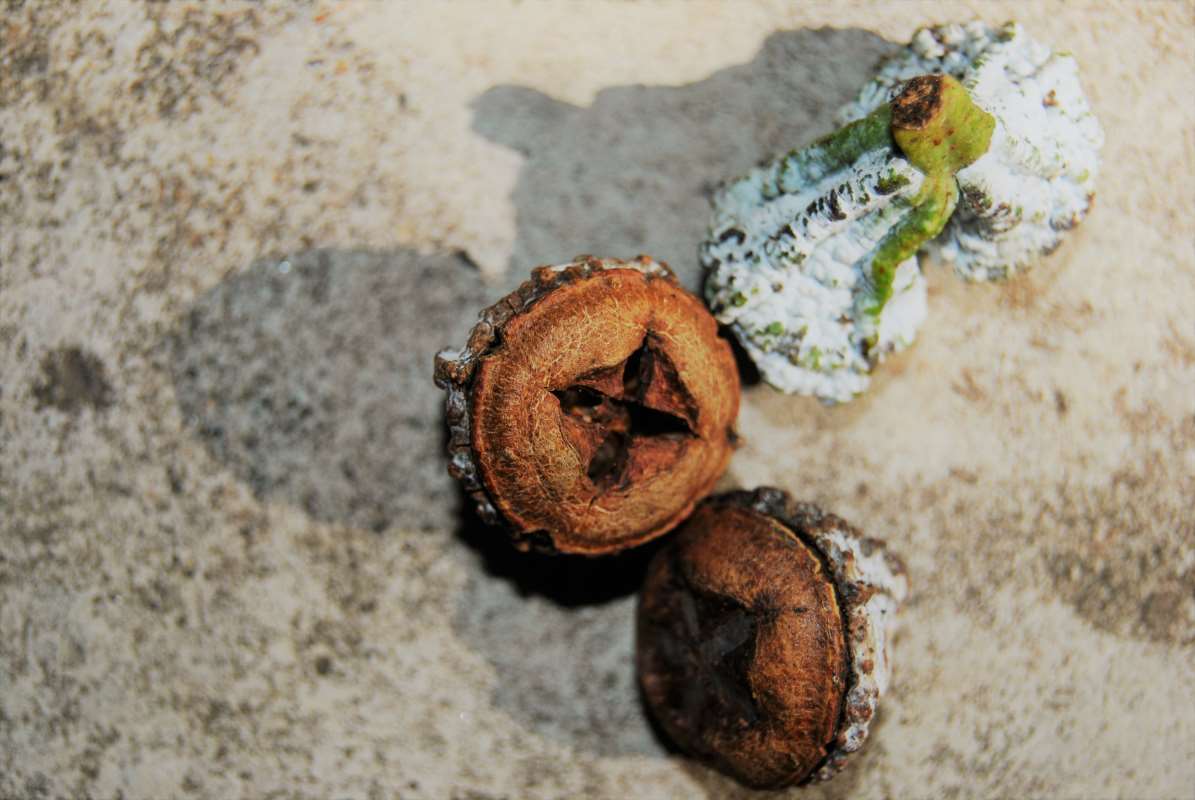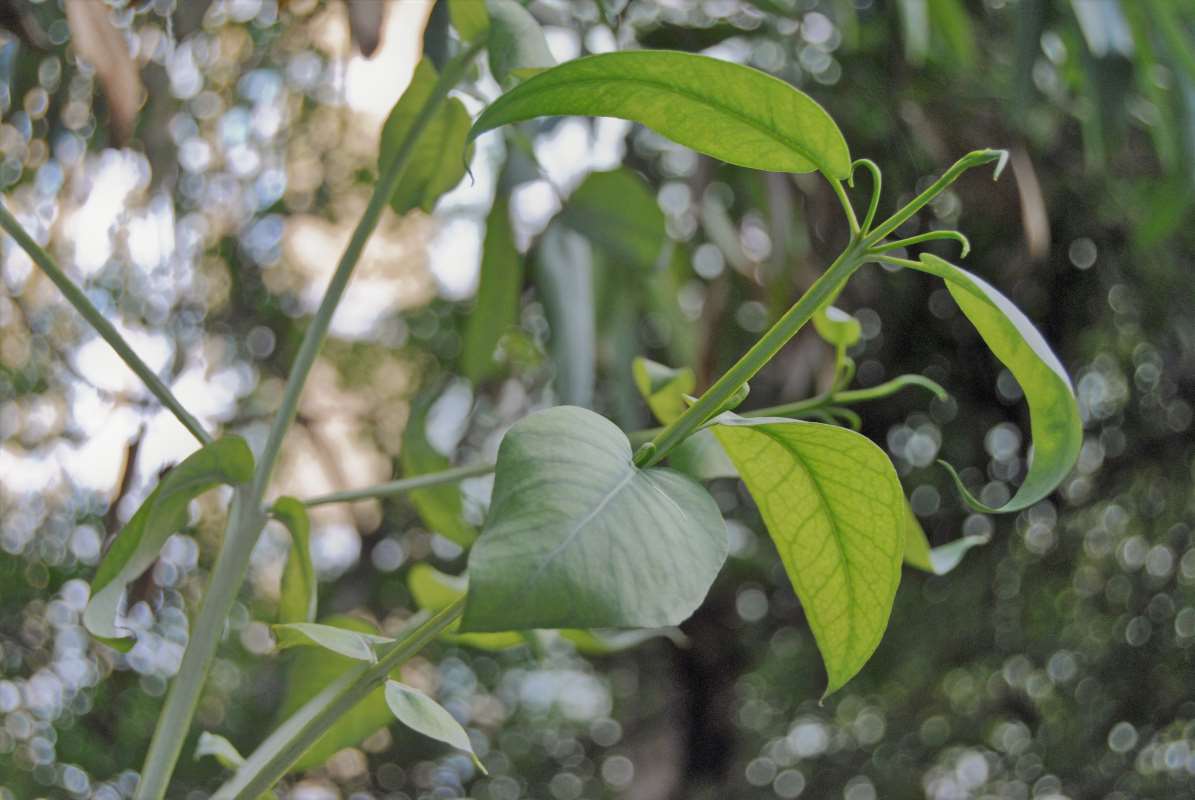
Blue Gum
Eucalyptus globulus
Family e description
Belonging to the Myrtaceae family, the Eucalyptus is an evergreen, fast-growing tree that can reach a height of up to 60 m.
It has a wide irregular canopy. The trunk is smooth, straight but prone to a spiral twist, with a bark that peels off at the topmost parts creating a stained image of green, gray and brown.
The leaves are narrow, sickle-shaped, dark green and about 10 to 30 cm long. The leaves of the young trees and shoots of the base are, in turn, wider and tender, covered by a blue-grey resin.
The yellow flowers appear between June and October, solitary in the armpits of the branches or in groups of 3 flowers. They have numerous stamens that produce nectar much appreciated by bees.
The fruit is a woody capsule that matures in October. It can have 3 to 6 leaflets arranged under a tetragonal disk where the seeds are found.
Origin and habitat
The eucalyptus is native to south-eastern Australia and Tasmania, scattered mainly across the most temperate places. In Portugal it is present in all regions, with a higher incidence on the west coast, associated with forest stands.
It tolerates dryness, but not low winter temperatures, frost, intense fog or prolonged dryness.
It has a preference for clayey, siliceous, moist and even marshy soils.
Uses and curiosities
It is propagated by cutting or seed, in greenhouses. After cutting the trunk, it bounces back.
In addition to some ornamental functions, the species was originally introduced to form forest stands for the paper pulp industries.
The leaves have numerous medicinal properties, namely balsamic and antiseptic and are used for pharmaceutical, perfumery and confectionery purposes. The flowers are used by bees to produce honey.
The species inhibits the biodiversity around it, acidifying the soil and capturing the available water in the soil.
In the Gulbenkian Garden, the eucalyptus trees are some of the oldest existing trees, having already been present in the old Park of Santa Gertrudes and carefully preserved when installing the Gulbenkian Foundation in this space.


